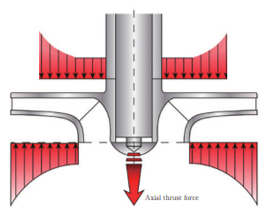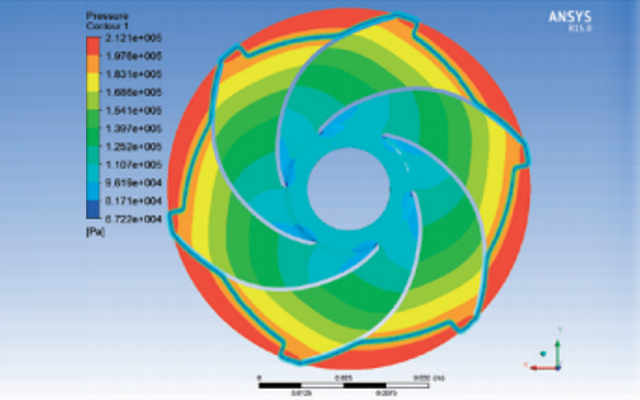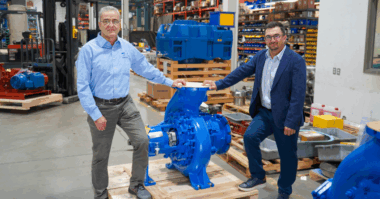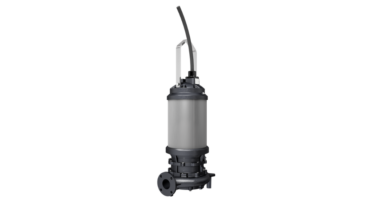Author: Kevin Fulton, Design Engineer, EBARA Pumps Americas Corporation
What is Axial Thrust?
Axial thrust load in a pump is caused by unequal distribution of pressure between the front and back shrouds of an impeller. A radial impeller rotating in liquid produces a centrifugal effect, creating a discharge pressure1. The difference between the discharge pressure and suction pressure causes axial thrust force to act on the impeller. In a multistage pump, axial thrust force increases with the number of stages. This axial thrust loading often leads to reduced life of the motor bearings. General methods employed to absorb the axial thrust load typically include increasing the motor bearing size, using enhanced motor bearings, or mounting additional bearings onto the pump bracket. In addition, traditional hydraulic solutions to reduce axial thrust force often decrease performance and efficiency of the pump.
To address this issue of axial thrust force, the Engineers at EBARA redesigned the impellers from their EBARA Model EVM pump – launching a new and improved Model EVMSU. The EBARA EVMSU vertical multistage pump features a newly designed “Shurricane™” impeller, which reduces the axial thrust load through innovative hydraulic re-design of the impeller shrouds while maintaining excellent performance and efficiency.

Figure 2.Axial thrust force acting on the new impeller
How does redesigning an impeller reduce axial thrust?
Computational fluid dynamic (CFD) analysis was used to assess the pressure distribution on the impeller (see Figure 1). The Engineers were then able to strategically remove sections of the shroud on the backside of the impeller where the highest pressure occurred. This reduces the pressure imbalance that produces axial thrust.
Figure 3 shows how axial thrust force was reduced from 375.1 Newtons (N) to 44.1 N – an 88% reduction from the previous design.

Figure 3. Comparison of axial thrust force between the previous model EVM and new model EVMS. *Note the reduction from 375.1 Newtons (N) to 44.1N – an 88% reduction!
What does this mean for the pump owner?
The optimized Shurricane™ impeller gives pump owners more motor options because significantly reduced axial thrust loads mean that commercially available motors with standard motor bearings are perfectly adequate to use with the EBARA Model EVMSU vertical multi-stage pump, which offers a hydraulic range of up to 390 GPM and 930 feet Total Dynamic Head (TDH). Ideal for booster, water purification, and hot water applications, the Model EVMSU can be coupled to standard C face motors because they have no special thrust bearing requirements.
https://empoweringpumps.com/products/ebara-model-evmsu-vertical-multi-stage-pump/
References:
- “Model EVMS Vertical Multistage Pumps for the Global Market”; 2016; Authors: Hiroyuki Kawasaki and So Kuroiwa, EBARA; https://www.ebara.co.jp/en/about/technologies/abstract/detail/__icsFiles/afieldfile/2017/03/10/252_E_P50.pdf




